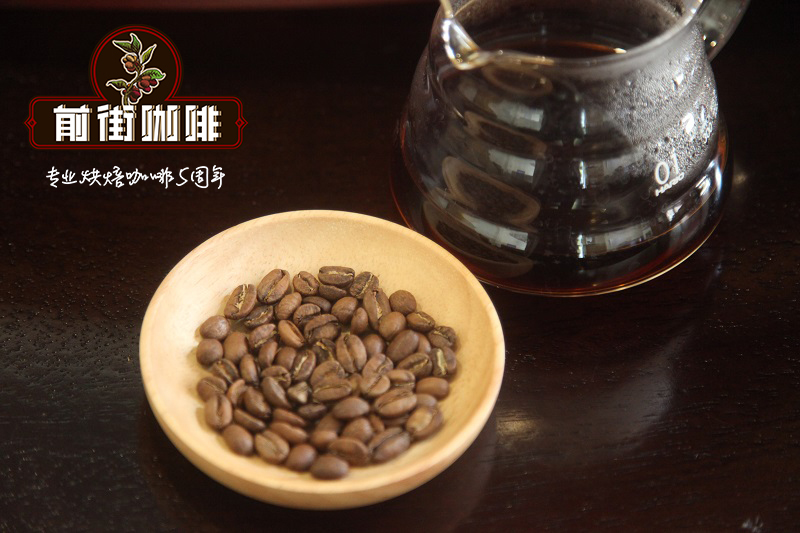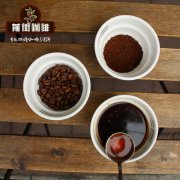The unique flavor of coffee is related to the growing environment. Air humidity and soil quality will affect the acidity of coffee.

Professional coffee knowledge exchange more coffee bean information please follow the coffee workshop (Wechat official account cafe_style)
The relationship between soil quality, humidity and organic acid (including citric acid, malic acid, acetic acid, fatty acid, chlorogenic acid) and inorganic acid (phosphoric acid) in coffee beans.
The main results are as follows: (1) the volcanic rock producing area is easy to produce good coffee with good mellow and sour taste. The cup tester also found that coffee from volcanic rock and soil has the most balanced and bitter flavor of sour, fragrant, sweet, mellow and bitter. The study found that this is because volcanic rocks contain high concentrations of sulfur and sulfides, which happen to be essential elements before some aromatic elves are synthesized, so coffee grown in volcanic areas usually has a strong aroma. In addition, this soil is also rich in potassium, which helps the alcohol thickness of coffee and increases the weight of beans and the thickness of branches. Interestingly, among the eight major producing areas in Guatemala, Vivetta Nanguo, Coban (located in the north) and New Oriental three producing areas are not volcanic rocks, and the flavor of coffee is obviously different from that of the other five major volcanic rock producing areas. Vivetta Nanguo (strong acid), Koban (strong fruit) and New Oriental (chocolate) have unbalanced overall flavor, but have beautiful personality, which may be caused by less sulfur and potassium in the soil of these three areas.
(2) the study also found that coffee in high-humidity producing areas is easy to breed very fruity coffee, which is confirmed in Koban, Guatemala. Koban has a tropical rain forest climate, and its humidity is the highest among the eight major producing areas in Guatemala. The aroma and sweet and sour taste of fruit are obviously higher than those in other producing areas, but the thickness of alcohol is slightly lower. High humidity can increase the malic acid concentration of coffee pulp, fruit aroma molecules are absorbed by coffee beans, will drink a strong fruit flavor in the cup test, which is the characteristic of Koban producing area. This is like French Chardonnay white wine (Chardonnay) unique fruit aroma, derived from a higher concentration of malic acid. In addition, high humidity also contributes to the production of sugar. most sweet fruits grow in areas with high humidity, but high humidity and high temperature can easily make the fruits mature early or even rot easily. Fortunately, Guatemala is blessed with high humidity, but not high temperature. It enjoys high humidity, but avoids the bad of high temperature. Koban's high humidity and microclimate create the special "regional flavor" of coffee.
(3) Kenyan coffee is also a good textbook. Kenya's "SL28" is famous for its unique sour berry aroma. In 1999, the American Fine Coffee Research Institute (Coffee Quality Institute, now renamed Coffee quality Research Institute [Coffee Quality Institute]) studied Kenyan coffee and soil and water in an attempt to find out the secret of the unique sour taste of berries. The results showed that the Kenyan soil contained high levels of phosphoric acid, and the concentration of phosphoric acid in the coffee brewed by "SL28" and "AA" was much higher than that of the Colombian coffee "Supremo" in the control group. Interestingly, when the scientists added phosphoric acid to other individual coffee tested, it changed the original sour taste and became closer to the Kenyan raspberry flavor. The experiment shocked the coffee industry, and some coffee chemists questioned that phosphoric acid could not be the protagonist of the sour taste of Kenyan coffee berries, because potassium had neutralized the phosphoric acid, so the sour aroma in the cup was not phosphoric acid. And if phosphoric acid works so well, why does the new Kenyan hybrid "Ruilu 11" drink sharp rather than raspberry sour? Scholars further found that "SL28" was planted in Kenya as early as the beginning of the 20th century and has been accustomed to Kenya's high concentration of phosphoric acid soil and even absorbed phosphoric acid into beans. However, "Ruyilu 11" was only planted in Kenya in 1985 and has not yet adapted to the high phosphate soil. Scientists also found that the coffee brewed by Ruyilu 11 contains high citric acid, which should be the main cause of sour and astringent taste. In recent years, scientists at the Ruilu Coffee Research Center in the northeast of Nairobi, Kenya, have instructed coffee farmers who grow "Ruyilu 11" to add more phosphoric acid to the fertilizer, which has significantly reduced the concentration of citric acid, which is of great help to improve the flavor. It is still unclear whether the unique active acid and raspberry aroma of "SL28" is caused by phosphate soil, but interestingly, when "SL28" is transplanted to countries such as Myanmar in Asia, it loses its Kenyan raspberry flavor. This is enough to show that varieties are important, but when planted in different soil and water, latitude and altitude, the flavor will change with 72.
Phosphoric acid is a carbon-free inorganic acid, which has attracted academic attention because of the unique flavor of Kenyan beans, but coffee chemists still focus on organic acids which are closely related to "regional flavor". Coffee trees produce dozens of organic acids (that is, acids containing carbon molecules) or pre-products of organic acids through photosynthesis, which are stored in bean cells for coffee seed germination or metabolism. Organic acids are metabolites of coffee trees, and their advantages or disadvantages are directly related to the planting environment or ecology. this is a field that coffee chemists are currently delving into, and has a far-reaching impact on how farmers grow more good coffee with fragrant elves.
The concentration of organic acid in Arabica coffee beans (as a percentage of bean weight) is chlorogenic acid 5. 5-8%, citric acid 0.7-1.4%, malic acid 0.3-0.7%, acetic acid 0.01%. Among them, chlorogenic acid and citric acid belong to dead acid, which is disadvantageous to the aroma of coffee, while malic acid and acetic acid are active acids, which have aroma-enhancing effect. Citric acid without citrus flavor, tastes like a bite of unripe lemon, sour and bitter, and is often used in the food processing industry to add to preservatives or preservatives. Malic acid is common and aromatic in grapes, oranges, apples and vegetables, and is commonly used in chewing gum, soda and low-calorie drinks in the food industry. Acetic acid is also aromatic, but it is very small in raw beans and is produced by carbohydrate degradation during baking, and the aroma is shown in the cup.
Important Notice :
前街咖啡 FrontStreet Coffee has moved to new addredd:
FrontStreet Coffee Address: 315,Donghua East Road,GuangZhou
Tel:020 38364473
- Prev

How do you tell the difference between floating beans and sunken beans in coffee cherries?
Professional coffee knowledge exchange more coffee bean information Please pay attention to the coffee fruit picked by the coffee workshop (official Wechat account cafe_style) from the coffee field. It must be sent to the processing plant immediately on the same day to remove the immature small fruit, immature green fruit, ripe black fruit, and retain the ripe red fruit. The simplest and most effective method is to pour all the fruit into a large sink and ripen.
- Next

Can you make milk foam in a household coffee machine? How do I use the coffee maker steam sprinkler? How to make milk foam?
Professional coffee knowledge exchange more coffee bean information Please follow the coffee workshop (Wechat official account cafe_style) if there are people who have used a household Italian machine, after coming across a commercial coffee machine in the workplace, you may find that in addition to the difference between the boiler and heating methods, which makes the vapor of the steamed milk bubbles much stronger, the hole number and shape of the steam sprinklers are also different. Most of
Related
- Beginners will see the "Coffee pull flower" guide!
- What is the difference between ice blog purified milk and ordinary milk coffee?
- Why is the Philippines the largest producer of crops in Liberia?
- For coffee extraction, should the fine powder be retained?
- How does extracted espresso fill pressed powder? How much strength does it take to press the powder?
- How to make jasmine cold extract coffee? Is the jasmine + latte good?
- Will this little toy really make the coffee taste better? How does Lily Drip affect coffee extraction?
- Will the action of slapping the filter cup also affect coffee extraction?
- What's the difference between powder-to-water ratio and powder-to-liquid ratio?
- What is the Ethiopian local species? What does it have to do with Heirloom native species?

